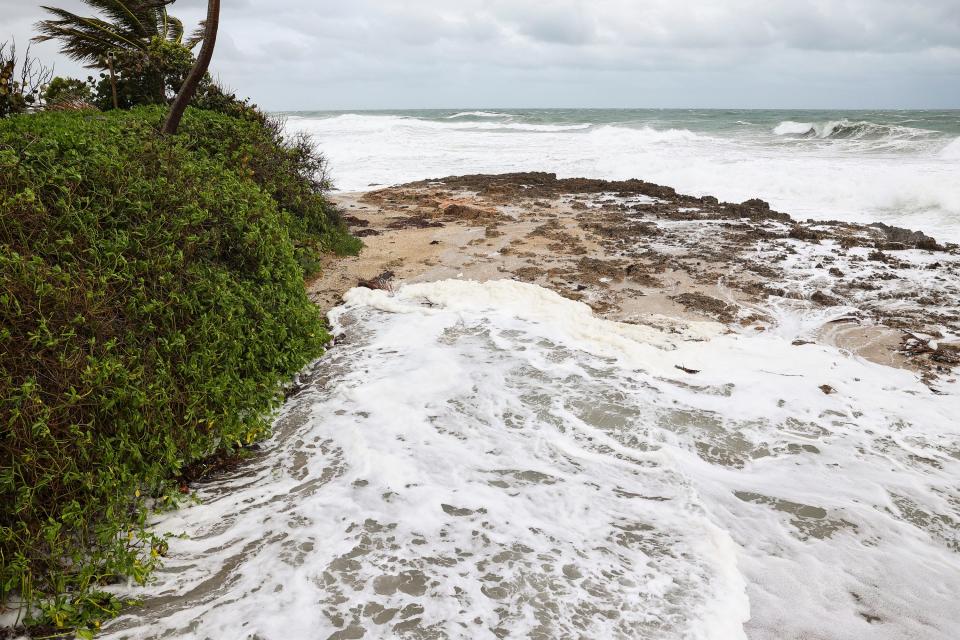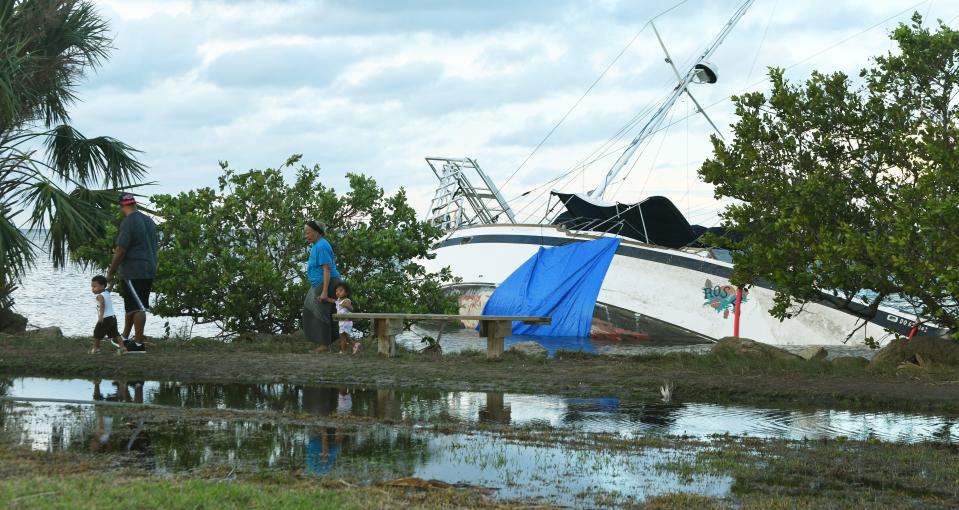Models said we'd see fewer but stronger hurricanes. Were they wrong?
Global warming was expected to cause slightly fewer but stronger hurricanes, typhoons and tropical cyclones, according to climate models.
That might yet hold true globally. But recent science shows more La Niña-like conditions — maybe also driven by climate change — than most climate models would have predicted.
And while the trend toward more La Niñas could mean fewer typhoons in the Pacific Ocean, it also stands to fuel more hurricanes in the Atlantic. Given the high probability that La Niña will form this summer, Floridians could soon get a taste of future hurricane seasons to come.
More: 1 million Florida buildings will be overrun by sea-level rise by 2100, study shows
"It's a very active area of discussion," said Phil Klotzbach, senior research scientist at Colorado State University's Department of Atmospheric Science. "As long as we continue this trend towards La Niña, I would say that Atlantic hurricane activity should be elevated, as La Niña reduces vertical wind shear in the Atlantic," Klotzbach added via email. "The global trend in hurricanes/typhoons is downward, since La Niña reduces hurricanes/typhoons in the Pacific Ocean."
The increasing trend in La Niña-like conditions was among the hot topics at the American Meteorological Society's annual conference earlier this year.
And predicting future hurricane threat is growing increasingly important for the insurance industry and emergency managers. Some one million Florida buildings, 90% of them homes, are expected to be overrun by sea-level rise by 2100, according to one study.
How do El Niño/La Niña impact hurricanes?

El Niño is a trend of warmer water near the equator in the Pacific that tends to create winds that shear apart hurricanes as they form in the Atlantic, resulting in fewer hurricanes. La Niña's cooler Pacific waters and neutral phases between the two cycles lack as many shearing winds, typically resulting in more hurricanes.
So if climate models continue to get predictions in the Pacific Ocean wrong, they could underestimate the number of hurricanes that will form and strengthen.
The models got it wrong
Climate scientists warn that maybe the observed record also is off, that humans could indeed be warming the ocean's surface. Or maybe hurricane activity is all just natural variability. Or the data could just be hoodwinking us all on hurricanes because of problems with how we measure climate data.
But a 2022 study in Nature found that observations show most climate models have been wrong for years, and that the difference in sea-surface temperature between the eastern and western Pacific has been strengthening, similar to a La Niña trend, not weakening as the models had predicted.
Current climate models predict a weakening of the temperature differences between the two zones in the Pacific, more akin to an El Niño trend.
But, "All of these theories have limitations and are incomplete," the researchers from Penn State, Columbia, Massachusetts Institute of Technology and the National Oceanic and Atmospheric Sciences concluded.
Klotzbach and other researchers have found that despite public perception to the contrary, over the past two centuries, landfalling hurricanes in the Continental United States have flatlined in both frequency and intensity, despite the increasing damages due to coastal population growth.
But more La Niña-like conditions could worsen risks of landfalls.
There are more than double the median hurricane landfalls during La Niña years than in El Niño and 16 times the median damage, Roger Pielke Jr., a University of Colorado, Boulder, noted in a 2022 post on his Substack, among other climate-change caveats. Pielke's coauthored several hurricane research papers with Klotzbach.
"Can you find an expert or a study to confirm whatever you want to believe on hurricanes? Sure you can — the topic is a cherry-picker’s dream," Pielke said in his 2022 Substack post. "And I see advocates and polemicists feasting on cherries all through hurricane season."
What are the chances of La Niña this year?
The National Weather Service Climate Prediction Center said there's a 50/50 chance La Niña will develop by August, and a 69% chance of it developing by September. If that happens, get ready for more hurricanes than usual.
"It's not looking good now," Klotzbach said.

The My Safe Florida Home Program provides grants of up to $10,000 for home improvements that qualify for property-insurance discounts.
This article originally appeared on Florida Today: Is climate change causing fewer but stronger hurricanes?

